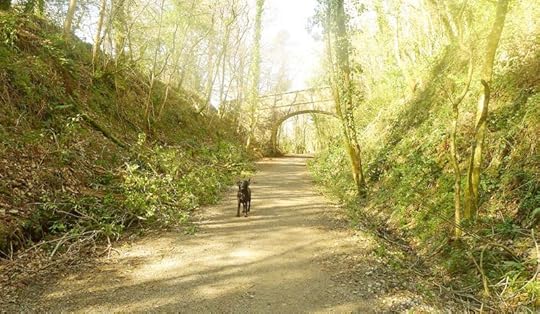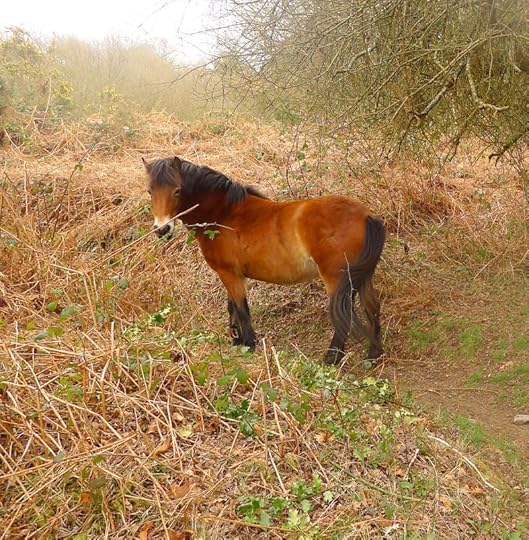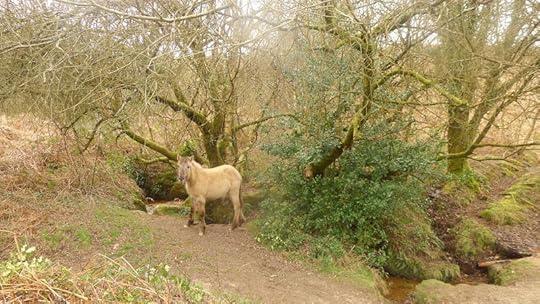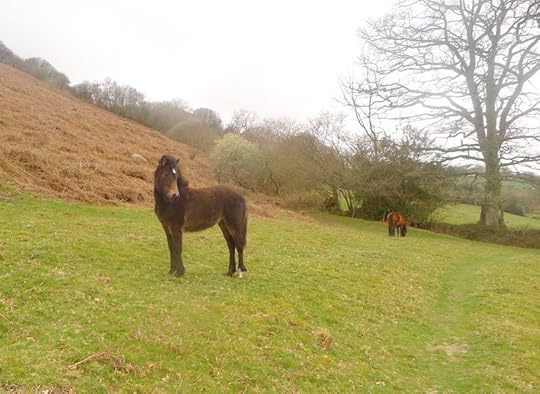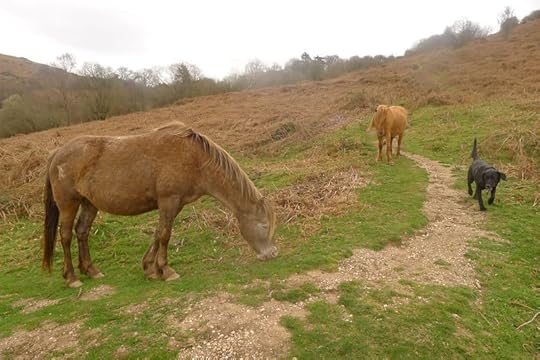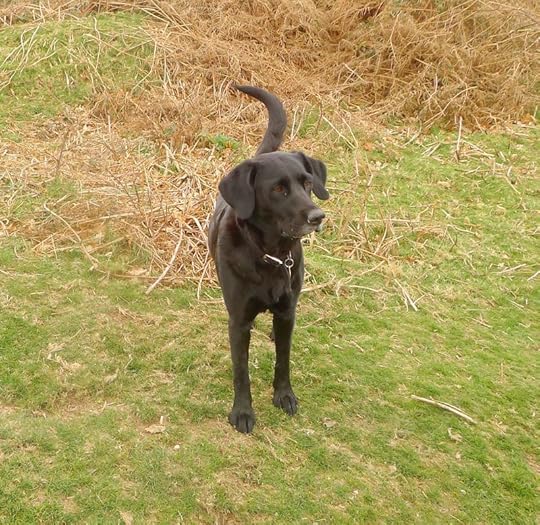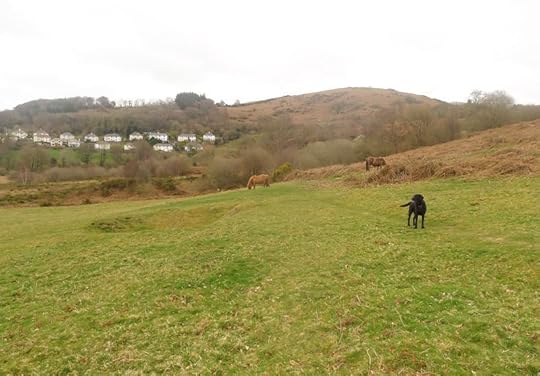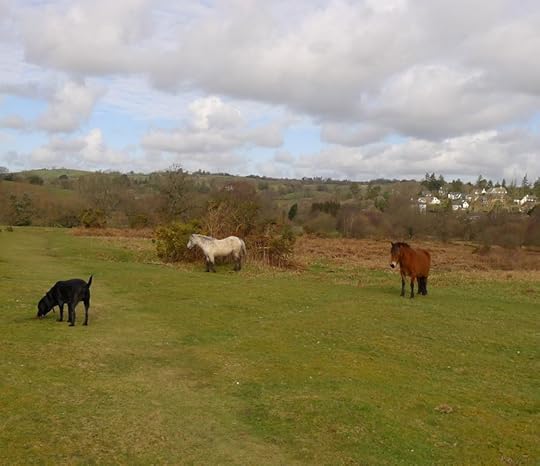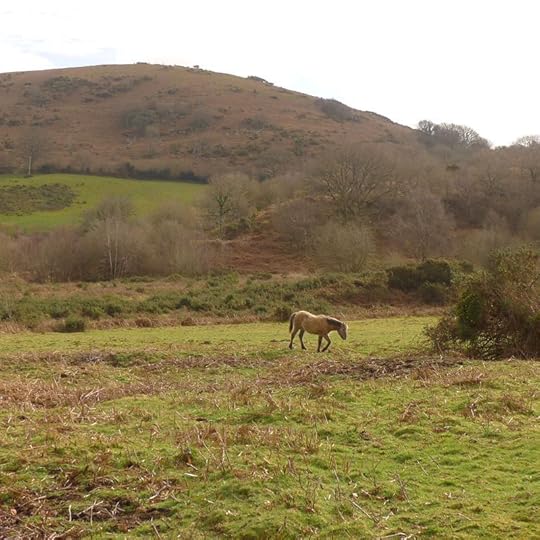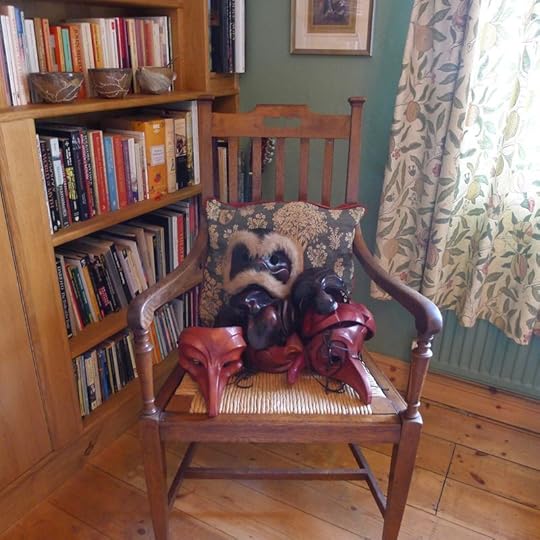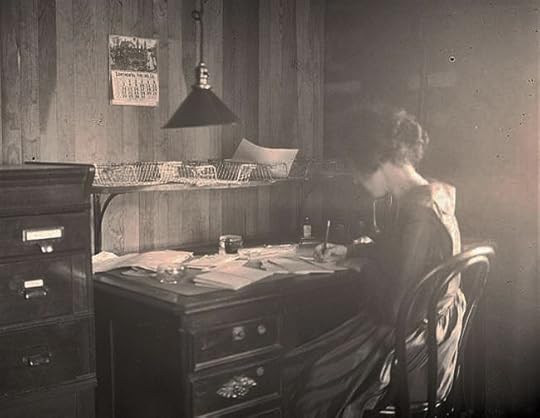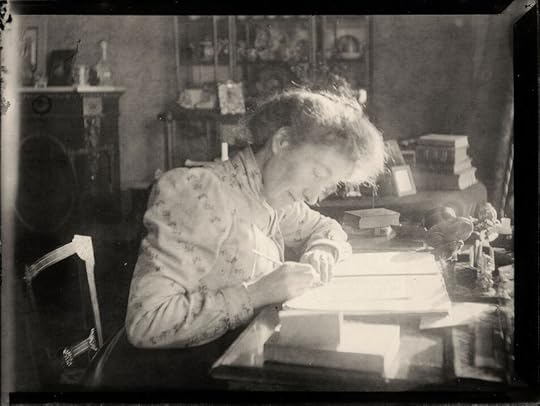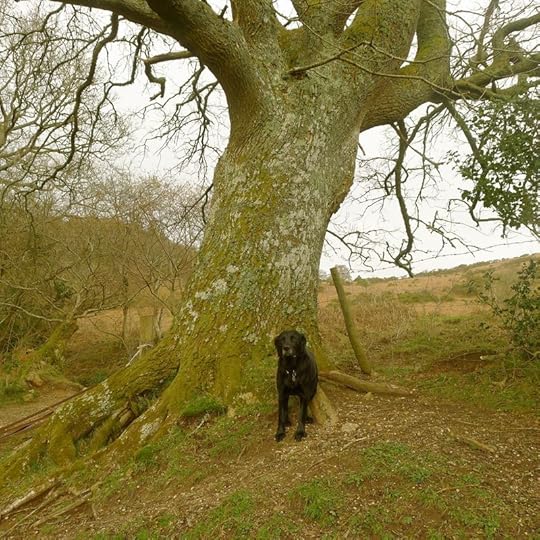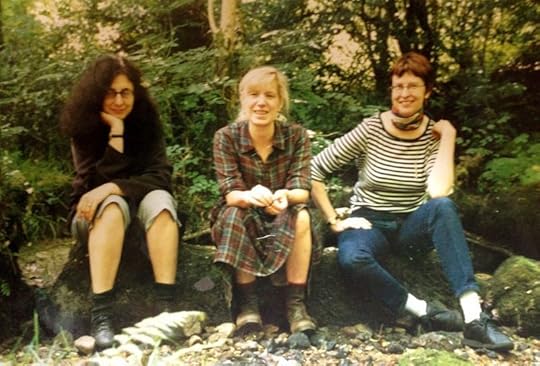Terri Windling's Blog, page 167
March 22, 2014
On days that I feel overwhelmed by the number and size ...
On days that I feel overwhelmed by the number and size of the tasks ahead of me, I remember these words from St. Francis of Assisi:
"Start by doing what's necessary; then do what's possible; and suddenly you are doing the impossible."
This seems to me to apply equally to creative work and the demands of daily life.
March 21, 2014
Daily myth
Animal encounters often come in clusters -- one month there are deer bounding constantly through the woods, another month brings several badger sightings in a row or the frog population exploding in the pond or hedgehogs appearing under every hedge and bush. In naturalist terms, this is easily explained by the seasonal cycles of animal life -- but in folkloric terms, the meeting of animals has deep mythic significance, for in traditional stories and sacred texts the world over animals are both themselves and more-than-themselves: creatures who negotiate the Mysteries, the elders and the teachers of humankind, messengers from the gods, the fates, the faeries, the nonhuman realms and the lands of the dead, speaking in the language of symbolism, metaphor, riddle, taradiddle, and dream.
For Tilly and me (and indeed for many in Chagford), the month of March has been marked by encounters with wild ponies...for this is the season they come down to graze and give birth on the village Commons. We often see them sunning on the Commons, or climbing the slope of Nattadon Hill, walking the path in a single file as they come and go from the open moor.
Tilly is fascinated by them, though knows she musn't bark or get underfoot. They're gentle with her and allow her to pass close...though this will change when the foals are born.
Looking down on the valley from my studio windows, I can watch the herd as it drifts across the land -- stopping now in this field and now in that one, disappearing for days and then back again. As they roam across the moor and the lanes and fields nearby, Dartmoor's famous, much-loved ponies are iconic creatures of flux and flow, of duality and liminality -- not entirely wild, not entirely tamed. They are spirits of edges, borders, interstices, and the faery paths betwixt and between. They are modern and archaic, common and uncanny, gentle and fierce. They are only ponies. They are so much more.
In mythic symbolism world-wide, both horses and ponies represent the following things:
Physical strength, inner strength, vitality, appetite for life, the driving force that carries you forward, the driving force that overcomes obstacles, passion, movement, flow, self-expression, and that which makes you thrive. They are also symbols of vital life forces held in perfect, exquisite balance: love and devotion paired with freedom and mobility; the wild and instinctive supported by the disciplined and domestic; strength balanced with vulnerability, mastery with modesty, power with compassion.
Movement. Flow. Vitality. That's just what I need -- what many of us need -- as winter slowly turns to spring. If winter was the time for staying still and dreaming deep, spring is when the sap rises and pushes us back up to the sun again; a time to open to new ideas, new possibilities, new creative directions. "May what I do flow from me like a river," said Rilke, "no forcing and no holding back, the way it is with children." The way it is with wild ponies too, as they flow across the Devon landscape.
And here's the other gift the ponies bring, and it's one I value equally:
In an age when Beauty is so often defined by the tall, the slim, and the ethereal, the ponies show me that there is also Beauty to be found in what is small, shaggy, sturdy, and built for endurance. Like me, and like so many of us. We are ourselves and more-than-ourselves. Ordinary and extraordinary. It's good to be reminded.
March 20, 2014
When the magic is working
From "Seeing Around the Corners" by Susan Cooper (1976):
"But of course, the whole process is a mystery, in all the arts. Creativity, in literature, painting, music. Or in performance: those rare lovely moments in the theater when an actor has the whole audience in his hands suddenly like that. You may have all the technique in the world, but you can't strike that spark without some mysterious extra blessing -- and none of us knows what that blessing really is. Not even the writers, who talk the most, can explain it at all.
"Who knows where the ideas come from?" she continues. "Who knows what happens in that shadowy part of the mind, something between Plato's cave and Masterlinck's Hall of the Night, where the creative imagination lies? Who knows even where the words come from, the right rhythm and meaning and music all at once?
"Those of us who make books out of the words and ideas have less of an answer than anyone. All we know is that marvelous feeling that comes, sometimes, like a break of sunshine in a cloud-grey sky, when through all the research and concentration and slog -- suddenly you are writing, fluently and fast, with every sense at high pitch and yet in a state almost like a trance.
"Suddenly, for a time, the door is open, the magic is working; a channel exists between the page and the shadowy cave in the mind.
"But none of us will ever know why or how."
Like Cooper, I'm fascinated by the various ways one finds this state of trance, or magic, or flow, or grace (call it what you will). Discovering our personal methods for reaching it best (with the least amount of struggle, the fewest obstacles put in our own way) is surely one of the most useful skills we learn over a lifetime in the arts.
Right now, my husband is in Portugal teaching theater students to work with masks -- which requires finding that same state of trance in order to let the "mysterious blessing" come through to bring the masks fully to life. In mythic terms, he is the psychopomp, leading them from one world into the next -- from time-bound daily reality into the timeless flow of performance art -- but the goal, when their classroom days are done, is to have the skill to cross over on their own, using their own best methods of travel.
The students are at the start of their creative lives, and I remember well what those years felt like -- when you think you know what art requires, and then the realization comes that you must go deeper and deeper still (if you're serious at all) into the unknowable, uncomfortable, vulnerable place where the root of creativity lies...which is to say, you must go deeper and deeper into yourself, which can be daunting indeed. Even now, after all these years, I still have days of sharp (or anxious, or befuddled) resistance to this act of deep surrendering...but the joy of age is that I know my own process now, the daily habits, practices, and mindset that will carry me past each block and obstacle and back into the work.
Every day I breathe deep, open up the heart again, and let the Mystery in.
 Photographs above: Wild ponies grazing on the village Commons, and Commedia dell'Arte masks.
Photographs above: Wild ponies grazing on the village Commons, and Commedia dell'Arte masks.
March 18, 2014
I'm unexpectedly out of the office today. I'll be back ...
I'm unexpectedly out of the office today. I'll be back just as soon as I can be.
"Out of clutter, find simplicity. From disorder, find harmony. In the middle of difficulty lies opportunity." - Albert Einstein
March 17, 2014
Tunes for a Monday Morning
I've suddenly noticed that the Monday Tunes of late have been rather melancholy (fado, murder ballads, myths of the West country, brooding songs of northern Europe) -- so here are songs & videos intended to start the week more cheerfully. The connecting theme between them is simply that they all make me happy...and I hope you enjoy them too.
Above: "Rock, Paper, Sissors" by the Norwegian band Katzenjammer, four musicians (friends from their art school days) who blend a passion for traditional instruments and world folk music with a love of cartoons and popular culture. The band's name is taken from an early American comic strip, The Katzenjammer Kids.
Below: sublime silliness from Beirut in the video for "Elephant Gun." Zach Cordon, the talented young multi-instrumentalist at the heart of Beirut, was raised in New Mexico (hence the echo of Mexican Mariachi music running through his work); he's also spent a lot of time in Europe, and is now based in New York.
Above, more silliness: "La Gallina" by the fabulous Ozomatli, out of Los Angeles. Oh, how I love these guys! If you ever have the chance to see them live, don't miss them.
Below: "Tangled Up" by Dutch singer Caro Emerald, queen of "new swing." It's from her second CD, The Shocking Miss Emerald (2013), which I was dancing around the kitchen to just this morning...to Tilly's great amusement (or perhaps bemusement).
And last, a lovely song to end on:
"Don't Let Nobody Drag Your Spirit Down" by the great bluesman Eric Bibb, recorded in the UK for the BBC's TransAtlantic Sessions. Bibb grew up in a musical family in New York City, and now lives in Helsinki, Finland.
March 12, 2014
The tools we use...
I'll be on a writing retreat for the next three days and therefore won't be on-line again until Monday -- so I'm throwing the conversation here at Myth & Moor over to you, with a question:
In Dani Shapiro's lovely book Still Writing, she speaks about the value of developing a writing rhythm that includes periodic breaks in order to give the mind a chance to ponder creative problems in an unstructured way. (She calls this "ritualized dreaming.") For previous generations of writers, this often took the form of cigarette breaks -- but almost anything else will do: going for a walk, making a cup of tea, etc., etc. Anything, that is, besides the Internet -- which Shapiro calls "crack cocaine for writers."
"This," she says, "may be the most important piece of advice I can give you. The Internet is nothing like a cigarette break. If anything, it's the opposite. One of the most difficult practical challenges facing writers in this age of connectivity is the fact that the very instrument on which most of us write is also a portal to the outside world. I once heard Ron Carlson say that composing on a computer was like writing in an amusement park. Stuck for a nanosecond? Why feel it? With a single click of the key we can remove ourselves and take a ride on a log fume instead.
"By the time we return to our work -- if indeed, we return to our work at all -- we will be further away from our deepest impulses rather than closer to them. Where were we? Oh yes. We were stuck. We were feeling uncomfortable and lost. And how are we now? More stuck. More uncomfortable and lost. Our thoughts have not drifted [in order to uncover a solution to whatever problem is at hand] but, rather, have ricocheted from one bright and shiny thing to another."
Zadie Smith agrees. Number 7 on her list of writers' "dos and don'ts" (in the Guardian article linked to yesterday) states in no uncertain terms: "Work on a computer that is disconnected from the Internet."
Almost every writer I know wrestles with this. The Internet is a wonderful tool for fostering community among creative folks, promoting one's work, and engaging with readers. It's an equally wonderful tool, alas, for procrastination and "feeling busy" while never actually writing. Some writers (artists, etc.) eschew the Internet altogether, or have Internet-free spaces for creative work, or use Internet-blocking tools like Freedom or Anti-Social...others are on-line practically 24/7 and have created careers that rest on constant enagement with their fans...so there's a wide variety of approaches to this issue; and, obviously, the only one that is "correct" is the one that works for you.
But it's clearly a thorny issue, for I don't personally know very many writers who feel like they've gotten their on-line/off-line balance exactly right; and I admit that it's an issue I occasionally wrestle with myself. When I get the balance right, then this blog and other forms of social media add a rich dimension to my creative work, supporting the writing, editing, and painting I do off-line. But it's all too easy to tip that precarious balance over...and when that happens, spending time on-line can leave me feeling drained and jangled, not invigorated and inspired.
Real life, for me, takes place outdoors, at home, and within my local community. I want my art to reflect these thing; and my Internet use to support these things (as well as engagement with the larger, worldwide community of folks who make and love Mythic Arts); but neither art nor life-online is intended to replace these things altogether.
I'm genuinely curious about how the rest of you engage with the Internet, how it effects your work, and whether you control your on-line time in any specific way. And yes, it's ironic that I'm asking this question while engaging with you all through cyberspace.
The Internet is both a blessing and a curse...but the aim, for me, is to keep this powerful communication tool in the blessing column just as much as possible. Achieving that goal is a work in progress, constantly re-evaluated and adjusted. What about you? What works, or doesn't work, for you? I look forward to reading your comments when I return.
The Pre-Internet, writing-related photographs above: Woman Writing by Louis Edward Nollau, 1936; an old typewriter; Suffragette (The National Woman's Party), 1919, by Harris & Ewing; Edwardian Woman Writing by Cochrane, exact date unknown; and Women at a Paris Cafe, 1952, photographer unknown;
March 10, 2014
Faire et se taire
On Thursday, I listed Jane Kenyon's instructions to herself for writing (via a quote from Dani Shapiro) -- which reminded me of an article in The Guardian a few years back in which contemporary authors were asked to list ten "dos and don'ts" for writing fiction (inspired by Elmore Leonard's "Ten Rules for Writing," originally published in The New York Times in 2001).
The writers polled included Margaret Atwood, Hilary Mantel, Zadie Smith, Andrew Motion, Michael Moorcock, and Philip Pullman...an interestingly wide-ranging list. The variety and contradictory nature of their "rules" makes it clear how individual such things are...and yet the lists make for fascinasting reading, and contain a few gems of advice.
My own personal favorite is Neil Gaiman's list, which is limited to eight:
1. Write.
2. Put one word after another. Find the right word, put it down.
3. Finish what you're writing. Whatever you have to do to finish it, finish it.
4. Put it aside. Read it pretending you've never read it before. Show it to friends whose opinion you respect and who like the kind of thing that this is.
5. Remember: when people tell you something's wrong or doesn't work for them, they are almost always right. When they tell you exactly what they think is wrong and how to fix it, they are almost always wrong.
6. Fix it. Remember that, sooner or later, before it ever reaches perfection, you will have to let it go and move on and start to write the next thing. Perfection is like chasing the horizon. Keep moving.
7. Laugh at your own jokes.
8. The main rule of writing is that if you do it with enough assurance and confidence, you're allowed to do whatever you like. (That may be a rule for life as well as for writing. But it's definitely true for writing.) So write your story as it needs to be written. Write it honestly, and tell it as best you can. I'm not sure that there are any other rules. Not ones that matter.
Helen Simpson is more succinct:
"The nearest I have to a rule is a Post-it on the wall in front of my desk saying "Faire et se taire" (Flaubert), which I translate for myself as 'Shut up and get on with it.' "
If you were asked to list your own ten "dos and don'ts" for writing or other creative work, what would they be?
Or, if you're a rebellious soul put off by the notion of "rules" altogether, then what are some pieces of advice you wish someone had given to you when you were younger...things you've gleaned over the years of working in the arts and/or living a creative life?
 Photographs: a walk through the Devon hills on a misty morning
Photographs: a walk through the Devon hills on a misty morning
March 9, 2014
Tunes for a Monday Morning
This week, three fine singers from Scandinavia:
Above, "Words," by the great Ane Brun. Brun was raised in a musical family in Molde, Norway, and is now based in Stockholm, Sweden. This song comes from her sixth CD, It All Starts With One (2011).
Below, Brun sings "Off the Road" with Anna Ternheim, a young singer/songwriter from Stockholm who now lives in New York City. The song was recorded for Ternheim's fourth CD, Leaving on a Mayday (2008).
And third:
"The Curse," by Danish singer/songwriter Agnes Obel, from her beautiful new album, Aventine (2013). Obel was raised in Copenhagen and now lives in Berlin.
March 8, 2014
Would you like to study writing with Ellen Kushner, Delia Sherman, and me?
Ellen Kushner and Delia Sherman will be teaching, once again, in the MA/MFA Program in Children's Literature at Hollins University in the Summer of 2015 -- and this time, I'll be joining them there as the 2015 Writer-in-Residence. You can find more more about the program on Ellen's blog, Puggy's Hill.
Please note that Delia's class will be available to all students, as will consultations with me -- but Ellen will be teaching an Advanced Seminar, so in order to study with her you will need to be at least a second year student. And that means you must apply now for this year's program and begin classes this summer. The application deadline is coming up fast: March 15, 2014.
Don't let the impending deadline put you off if this is something you'd be interested in. "The program encourages all levels of students," Ellen says. "Seriously. And there is Financial Aid. It's a 6-week summer semester, a chance to find out just what you're capable of; and during the year, you can acquire credits through on-line courses. And, because one does not enter grad school lightly or precipitously: Say 'Ellen sent me,' and our fabulous Program Director will accept applications through April 15th!"
That's Ellen, me, and Delia in the picture above, taken some years ago here in Chagford. We're older and, I certainly hope, wiser now...so come join us at Hollins in 2015, and let us impart some of what we've learned over all these years to you.
March 6, 2014
Who do you write for?
"Over the years I have come to realize that I write the book I want to read, the one I can't find anywhere." - Ann Patchett
"Any writer overwhelmingly honest about pleasing himself is almost sure to please others." - Marianne Moore
"I would be a liar, a hypocrite, or a fool -- and I'm not any of those -- to say that I don't write for the reader. I do. But for the reader who hears, who really will work at it, going behind what I seem to say. So I write for myself and that reader who will pay the dues." - Maya Angelou
"I write for those women who do not speak, for those who do not have a voice because they were so terrified, because we are taught to respect fear more than ourselves. We've been taught that silence would save us, but it won't." - Audre Lord
"I write for the people I grew up with. I took extreme pains for my book to not be a native informant. Not: 'This is Dominican food. This is a Spanish word.' I trust my readers, even non-Spanish ones." - Junot Diaz
"When I write, I aim my mind not to New York but toward a vague spot a little east of Kansas. I think of the books on the library shelves, without their jackets, years old, and a countryish teen-aged boy finding them, and having them speak to him. The reviews, the stacks in Brentano's, are just hurdles to get over, to place the books on that shelf." - John Updike
"When I write I try as far as possible to forget I'm writing it at all. I tell it down onto the page, as if I'm telling it to one person only, my best friend." - Michael Morpurgo
As for me, I write for my younger self...not so much the younger self I actually was, but the younger self I might have been had Fate shuffled her cards just a little differently: the one who didn't leave Pennsylvania, who didn't go to college, who didn't run fast enough and far enough to avoid replicating my mother's troubled, constricted life and who could barely have imagined the life I have now, its blessings and struggles alike. I write for her because I could have been her, oh so easily; and she (and every young woman and young man like her) deserves much better.
Here's a passage from a Paris Review interview with Richard Ford that I've quoted before, but it's particularly germaine today:
"I want to write, partly at least, for the kind of reader I was when I was nineteen years old. I want to address that person because he or she is young enough that life is just beginning to seem a mystery which literature can address in surprising and pleasurable ways. When I was nineteen I began to read [William Faulkner's] Absalom, Absalom! slowly, slowly, page by patient page, since I was slightly dyslexic. I was working on the railroad, the Missouri-Pacific in Little Rock. I hadn’t been doing well in school, but I started reading. I don’t mean to say that reading altogether changed my life, but it certainly brought something into my life -- possibility -- that had not been there before."
That's it exactly.
 The photograph of me above was taken some years ago by Ellen Kushner, in Ellen & Delia Sherman's old flat in Paris...a long way from Pennsylvania.
The art above is by Pierre Bonnard (France, 1867-1947) and Fabio Hurtado.(Madrid, Spain).
The photograph of me above was taken some years ago by Ellen Kushner, in Ellen & Delia Sherman's old flat in Paris...a long way from Pennsylvania.
The art above is by Pierre Bonnard (France, 1867-1947) and Fabio Hurtado.(Madrid, Spain).
Terri Windling's Blog
- Terri Windling's profile
- 708 followers



